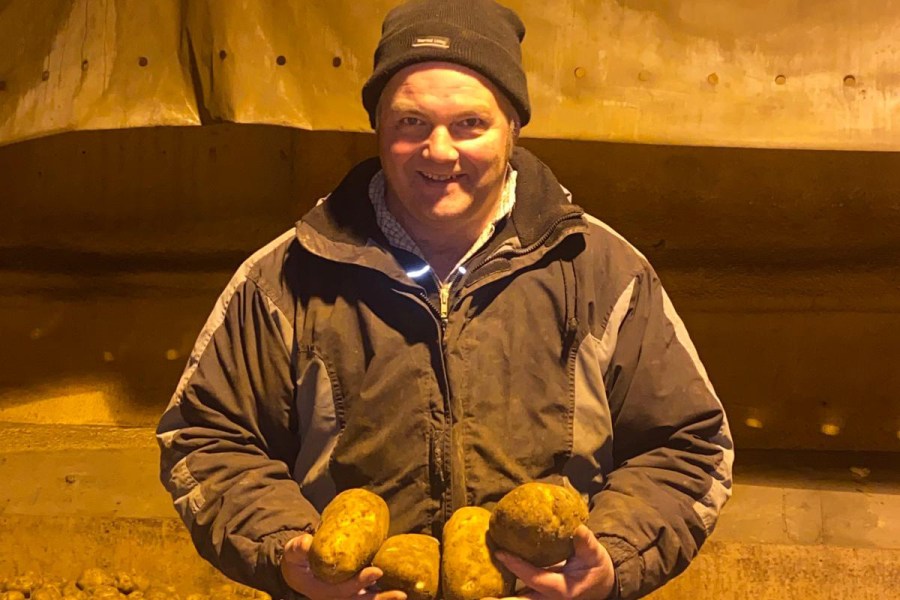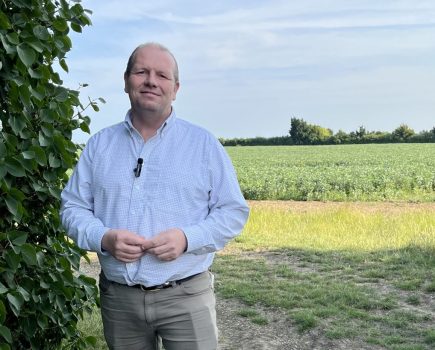by Andrew Wilson
Is it going to be a back end of sheeting trailers and dragging tow straps around? Who knows? Mother Nature tends to pay her debts at some time or other.
Haytime here began 14 May, the earliest ever. My thought was that the weather was good, it was starting to go to seed already, and if the season turned catchy we’d be chasing a bulk of rough old grass to get the good stuff. Maybe we’ll get a second cut between harvesting barley and wheat, but it’ll have to rain first.
As I write this, we’re yet to start cutting our barley. We’re plagued by volunteer wheat this year and have some elsewhere to cut that has a surprising amount of secondary growth in the bottom. So for the first time in as long as I can remember, pre-harvest desiccation has been the order of the season.
Twinkle Toes has come into her own for this, having narrower wheels and more clearance than its trailed stablemate (for those wondering, Twinkle Toes is a 29-year-old light self-propelled hydrostatic sprayer that I added to the fleet last winter).
Winter wheat and spring cereals are turning colour faster than I’d like. We committed to a significant dryer upgrade back in winter but for a multitude of reasons, it’s not finished yet. Will we need it? Undoubtedly yes, it’s rare not to dry anything at all here.
The winter barley will likely have to go through quickly to wissen up any bits of remaining sap from the aforementioned volunteers – it doesn’t make much financial sense with the feed barley price in the doldrums of £140/t, but neither does a mouldy heap of unsaleable corn, which is more likely given the high temperatures we’re experiencing currently.
You could be forgiven for thinking that ‘the job’s knackered’ at the moment, what with our government’s short-sighted decision on ethanol kicking the base out of the feed wheat market by which other commodities are priced. So what’s the way forward here?
Second wheats have historically been ok, but increasingly they’ve become break even at best. Given grassweed pressure isn’t going away or getting cheaper, spring barley will form a bigger part of our heavy land rotation instead of second wheat, with spring oats following sugar beet instead of spring barley to precede a first wheat on more reliable land.
It’s a gamble for sure, but I think we’ve learned a few lessons of how far to push boundaries over the years and have to at least try to improve our resilience. My cultivation policy is as little as possible but as much as necessary, but sometimes we focus too much on the former and not enough on the latter.
A simple cover of buckwheat, vetch and a little phacelia will protect this land over winter, but will be destroyed early and be sown into a cultivated seedbed rather than be direct drilled, which should improve spring barley establishment.
Sugar beet is interesting this year. We have some conventional and some Smart beet. The Smart has struggled to get going due to a lack of moisture but is motoring now. Beneficial insects are in abundance, so to maintain their presence to protect the crop from virus-carrying aphids, we’re yet to apply an insecticide. So far at least, they’re managing to keep the crop healthy.
The Futures beet price is currently sub-£20/t which doesn’t bode well for an inspiring contract for next year’s crop, so we may finish up growing less beet and more beans since we have a decent local market for them.
I was fortunate to be invited to attend the Worldwide Mancozeb Summit at Rothamsted Research last month, learning how widely mancozeb is used across crops like bananas, soy beans, grapes, apples and pears, in addition to potatoes.
Mancozeb hasn’t been usable in the EU since 2022 and an increase in cases of blight has been noticed – resistance management has been compromised and productivity reduced as a result. This is a serious situation, and one to which the market may have to adapt. The fate of mancozeb was discussed at a court case in Luxembourg on 1 July, which was reasonably positive, so we await the decision in a few months’ time.
A focus on varietal traits particularly blight susceptibility, and those prone to alternaria, will be ever more necessary because not having mancozeb as a tool obviously increases risk and puts pressure on other active ingredients.
My potato crops at present are holding on well, but boy-o-boy are the irrigators testing me this time. From pump impellors expiring to split pipes; engine water pumps expiring, dodgy flow switches, stuck chain tensioners that invariably only let go at night resulting in seven hours of water landing on two hours’ worth of land in the lowest part of a field, we’ve had it all this year. It’s hard building infrastructure in lean times, particularly when a chunk of the crop is grown on one-year cropping licences like a lot are nationwide. At least disease pressure is low.
In between chasing irrigators and spraying this week, we’ve had a change of pig batches and hauled the muck out. We’ve kept B&B pigs for 35 years now, and for all it doesn’t make a fortune, it is constant, low risk and turns straw into muck which keeps our land in decent fettle.
We’ve also said goodbye to two local farming stalwarts, both of whom have been around for all of my life – it’s a timely reminder that nothing lasts forever, and to seize the moment as much as possible.
Here’s to a fruitful, trouble-free and profitable harvest; well, a man must be optimistic!
This article was taken from the latest issue of CPM. Read the article in full here.
For more articles like this, subscribe here.
Sign up for Crop Production Magazine’s FREE e-newsletter here.




